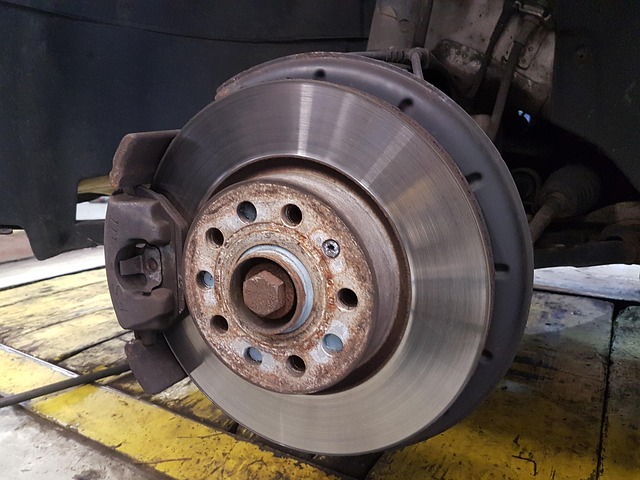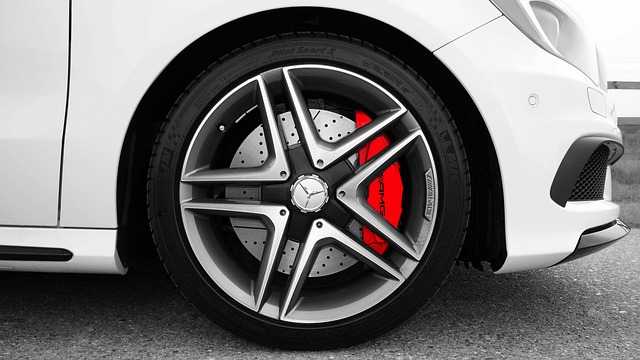Brake systems are essential for vehicle safety, with pads, rotors, calipers, and fluid working together to slow or stop cars. Regular maintenance and timely repairs ensure optimal performance. Cost-effective options like brake assembly swaps and ABS pump replacements save money without compromising safety. While DIY brake maintenance is feasible, complex modern systems require professional expertise to avoid serious safety risks. Regular brake checks and simple maintenance practices prevent expensive replacements and enhance overall vehicle safety and budget management. Exploring select brake replacements, such as disc brakes, offers enhanced stopping power and heat dissipation while ensuring peace of mind on the road.
Looking to save on brake replacements? Understanding your brake system is the first step. This article guides you through essential components and their functions, empowering you to make informed decisions. We explore cost-effective options, from DIY maintenance to professional services, helping you navigate select brake replacements smartly. Learn regular check-up tips to prevent costly repairs and extend your brakes’ lifespan.
- Understanding Brake System Basics: Essential Components and Their Functions
- Exploring Cost-Effective Brake Replacement Options
- Do-It-Yourself (DIY) Brake Maintenance: A Viable Alternative?
- Professional Brake Services: When to Opt for Expert Help
- Regular Brake Checks and Maintenance Tips to Save on Replacements
Understanding Brake System Basics: Essential Components and Their Functions

Brake systems are a fundamental part of any vehicle’s safety features. Understanding their basic components and functions is crucial when considering select brake replacements. The primary parts include the brake pads, rotors, calipers, and brake fluid—each playing a critical role in stopping your vehicle. Brake pads are responsible for making contact with the rotors, creating friction to slow or stop the car. Rotors, often made of metal, act as the surface against which the pads press. Calipers house and manipulate the pads, ensuring they apply even pressure on both sides of the rotor. Brake fluid transmits this pressure throughout the system, enabling effective brake performance.
Regular maintenance, such as checking for pad wear indicators and timely bicycle brake repairs, is essential to ensure these components function optimally. Over time, pads can wear down, affecting braking efficiency and safety. Pad wear indicators—small metal tabs that touch the rotor when pads are worn—serve as a visual cue for replacement. Ignoring these signs could lead to reduced stopping power and even more severe brake issues. Therefore, seeking expert brake advice is vital in maintaining a safe driving experience.
Exploring Cost-Effective Brake Replacement Options

Exploring Cost-Effective Brake Replacement Options
When it comes to vehicle maintenance, breaking the bank shouldn’t be the only option. Many drivers often overlook cost-effective brake replacement alternatives, opting for expensive dealership services. However, with some knowledge and consideration, you can select brake replacements that are both safe and budget-friendly. One popular choice is a brake assembly swap, which involves replacing specific components within your existing brake system, offering a more affordable solution compared to overhauling the entire setup.
Additionally, for those seeking even greater savings, an ABS pump replacement could be a viable option if your anti-lock braking system (ABS) needs repairing. This process entails replacing a crucial part responsible for maintaining optimal brake performance during emergency stops. By opting for these selective replacements, drivers can extend the life of their brakes while ensuring safe and reliable operation without breaking the bank.
Do-It-Yourself (DIY) Brake Maintenance: A Viable Alternative?

Many car owners often wonder if tackling brake maintenance themselves is a feasible option, especially when considering the cost of professional services. Do-It-Yourself (DIY) brake repairs can indeed be a viable alternative for those with some mechanical prowess and a willingness to learn. With the right tools and knowledge, vehicle owners can opt for a front brake upgrade or even explore different select brake replacements, such as disc brakes, which are known for their superior performance in terms of stopping power and heat dissipation.
DIY bicycle brake repairs have long been a popular choice for cycling enthusiasts, showcasing that understanding automotive brake technology is not exclusive to professionals. By taking the time to learn about various brake systems and components, individuals can effectively maintain and even enhance their vehicle’s braking capabilities, all while saving money on potential visits to the mechanic. This hands-on approach allows for greater control over one’s vehicle and can be a rewarding experience for those interested in delving into automotive maintenance.
Professional Brake Services: When to Opt for Expert Help

When considering affordable brake replacement options, it’s crucial to understand when professional help is essential. While many DIY enthusiasts may opt for do-it-yourself approaches to save costs, certain tasks, especially those involving complex brake systems, require expert brake advice. Modern vehicles are equipped with intricate braking mechanisms designed to ensure maximum safety, and a simple mistake during the replacement process can lead to serious consequences on the road.
Opting for whole car brake jobs or performing a brake assembly swap may be necessary when dealing with worn-out or damaged components. In such cases, turning to professional mechanics who specialize in these services is advisable. They have the expertise and tools to accurately diagnose issues, replace faulty parts, and ensure proper calibration of braking systems. This not only guarantees the safety of your vehicle but also extends its lifespan by preventing further damage.
Regular Brake Checks and Maintenance Tips to Save on Replacements

Regular brake checks are an affordable way to prevent costly replacements. By scheduling routine maintenance, you can extend the life of your brakes and save money in the long run. One simple step is to regularly inspect your brake pads for wear and tear; most modern vehicles have indicators that alert you when a replacement is needed. Catching this early can prevent severe damage and avoid an unexpected breakdown.
Additionally, keeping your ABS pump and hydraulic brake system in good condition is essential. Regular fluid checks and top-ups, along with cleaning the brakes to remove any debris or corrosion, can significantly impact their performance. Many bicycle brake repairs techniques are also applicable to car brakes; a quick clean and adjustment can often restore proper braking efficiency. These simple maintenance practices empower drivers to take control of their vehicle’s safety and budget.
When considering affordable brake replacement options, understanding your vehicle’s system and staying proactive with maintenance is key. Exploring cost-effective solutions like DIY kits or seeking professional services for complex repairs can significantly impact your budget. Regular checks and timely replacements of essential components ensure optimal braking performance and safety. By choosing the right approach based on your skills and vehicle needs, you can navigate towards safer drives while saving on select brake replacements.
